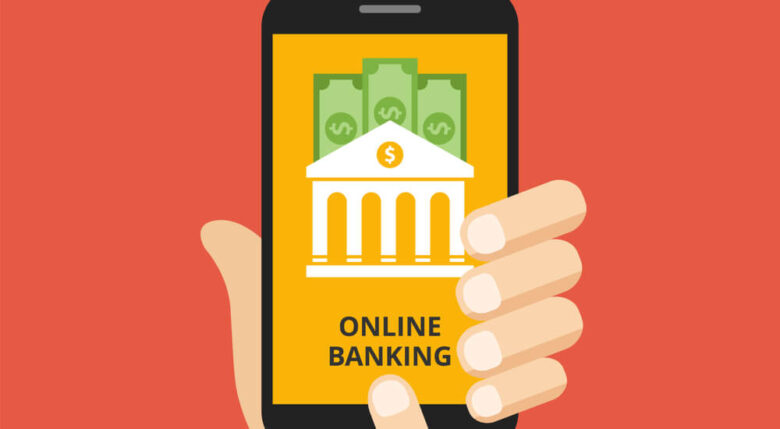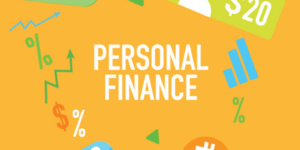Internet banking, also called internet banking or e-banking, has changed the way we handle money. This allows you to carry out various banking transactions easily and securely at home or on the go. In this article we will learn more about online banking. We’ll look at how it works, its pros and cons, and the steps you need to take to get started.
How to Get Started with Online Banking:
Internet banking is basically a website where banks and other financial institutions offer banking services to their users. This service allows you to view and manage your accounts online, make transactions and perform other banking tasks. How it works:
- Open An Account: Before banking online, you must have an account with a bank or other financial institution that offers online services. Usually this means going to a store or applying online. You will be given login details, usually a username and password.
- Access to the Online Portal: Once you have your login details, you will gain access to your bank’s online portal. You can do this via an online browser on your computer or a special app on your phone or tablet.
- Secure Login: When you visit your bank’s website or open its mobile app, you will be asked to enter your login details. Security methods such as encryption and two-factor authentication are often used to keep data safe.
- Account Overview: After you successfully log in, you will usually see a list of all your accounts, such as loans, credit cards, checking accounts and savings accounts. You can view your balance, recent activity and other useful information for you.
New Features of Online Banking:
Internet banking offers many advantages and options, such as:
- Account Management: You can view your account balance, transaction logs, and other information about your account. Some websites also allow you to change the order of your checks and request a settlement.
- Transfer Money: Online banking allows you to transfer money between accounts, send money to other people or companies, and schedule automatic transfers.
- Bill Pay: Online banking websites offer bill pay services that allow you to pay your bills automatically, either one-time or on a recurring basis.
- Mobile Deposit: Many mobile apps allow you to deposit a check by taking a photo of the check with your phone’s camera.
- Notes and Alerts: You can set alerts to get information about account actions, low balances, upcoming payments, and more.
- Credit Card Management: You can view the charges on your credit cards, pay them off and even redeem reward points.
- Loan Management: If you have a loan from a bank, you can see how much you owe, make payments, and obtain loan-related documents.
Benefits of Online Banking:
Online banking has many advantages, making it a good choice for many people:
- Convenience: It is more convenient because you can view your accounts and do business anywhere you have an internet connection. This saves you time and eliminates the need to personally visit a bank branch.
- 24/7 Access: Even if your bank is closed, you can conveniently handle your money via online banking.
- Cost Savings: You save money because many online banks offer better interest rates and lower fees on savings accounts than traditional banks.
- Less Paperwork: Statements and documents that can be viewed online mean that paper files are no longer necessary. This makes the process more sustainable and environmentally friendly.
- Security Features: To ensure the safety of your data and activities, online banking uses high-tech security measures such as encryption and two-factor authentication.
- Easy Account Monitoring: You can keep an eye on what’s happening with your account and quickly spot any transactions that shouldn’t be there with real-time updates.
Possible Hazards and Safety Issues to Consider:
Although online banking is generally safe, there are some things you should know about the risks:
- Phishing-Based Scams: Beware of emails and websites that try to get you to reveal personal information. Make sure you always visit your bank’s main website.
- Public Wi-Fi: If you want to use online banking, avoid using public Wi-Fi networks as they may not be secure. If you need to access an account on a public network, you will need to use a VPN.
- Device Security: Use strong, unique passwords and keep your computer and phone up to date with security changes. Enable two-factor authentication for extra security.
- Account Monitoring: Check your account statements regularly and set alerts to look for unauthorized transactions.
Learn How to Use Online Banking:
Here are the steps you need to take to get started with online banking:
- Choose A Bank: Choose a bank or other financial institution that allows you to bank online and open an account.
- Receive Login Details: After setting up your account, you will receive login details, which usually include a username and password.
- Download the Mobile App: If your bank has a mobile app, download it so you can check your accounts on the go.
- Sign In: Use your login information to access your account on your bank’s website or mobile app.
- Explore Its Features: Find out what the platform can do, then use online banking to pay your bill, check your balance, make payments and more.
Conclusion:
All in all, online banking is a useful tool that makes managing your money easier and allows you to access your accounts at any time. Understanding this simple and safe way to manage your money, its benefits and potential risks will help you make the most of it. As long as you take the right precautions and understand the basics of online banking, you can handle your money safely almost anywhere.
FAQs:
1. What is online banking and how is it different from traditional banking?
Internet banking is a digital platform offered by banks that allows customers to conduct various financial transactions over the Internet. Unlike traditional banking, online banking offers 24/7 services, allowing users to manage their accounts anytime, anywhere.
2. Is online banking safe? What measures are in place to protect user information?
Yes, online banking is safe. Banks use encryption technologies such as SSL and implement multi-factor authentication (MFA) to protect user data. Regular software updates, firewalls and real-time transaction monitoring are also used to ensure security.
3. What functions can I use via internet banking?
Online banking offers a variety of features, including fund transfers, bill payments, account balance checks, transaction history reviews, loan applications, and even remote check deposits. Many platforms also offer personalized financial insights and alerts.
4. Can I bank online on my mobile device?
Yes, most banks offer mobile banking apps that are compatible with smartphones and tablets. These apps offer the same functionality as online banking platforms, allowing users to manage their finances anytime, anywhere.
5. What is the future of online banking? How will this affect users?
The future of online banking promises exciting developments, including personalized financial advice powered by artificial intelligence and blockchain-based security measures. These developments will improve the user experience, making banking easier, more secure and tailored to individual needs.



